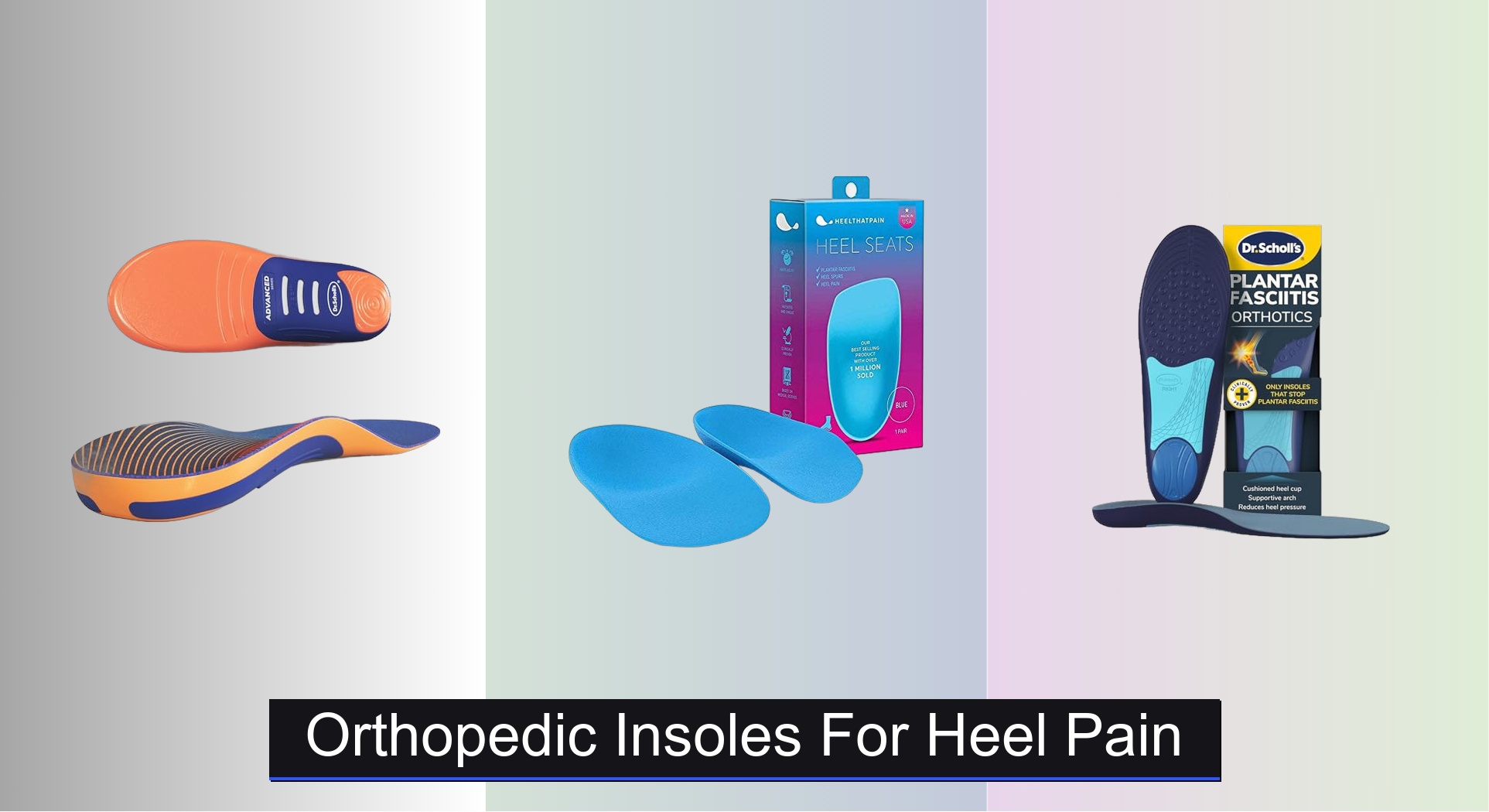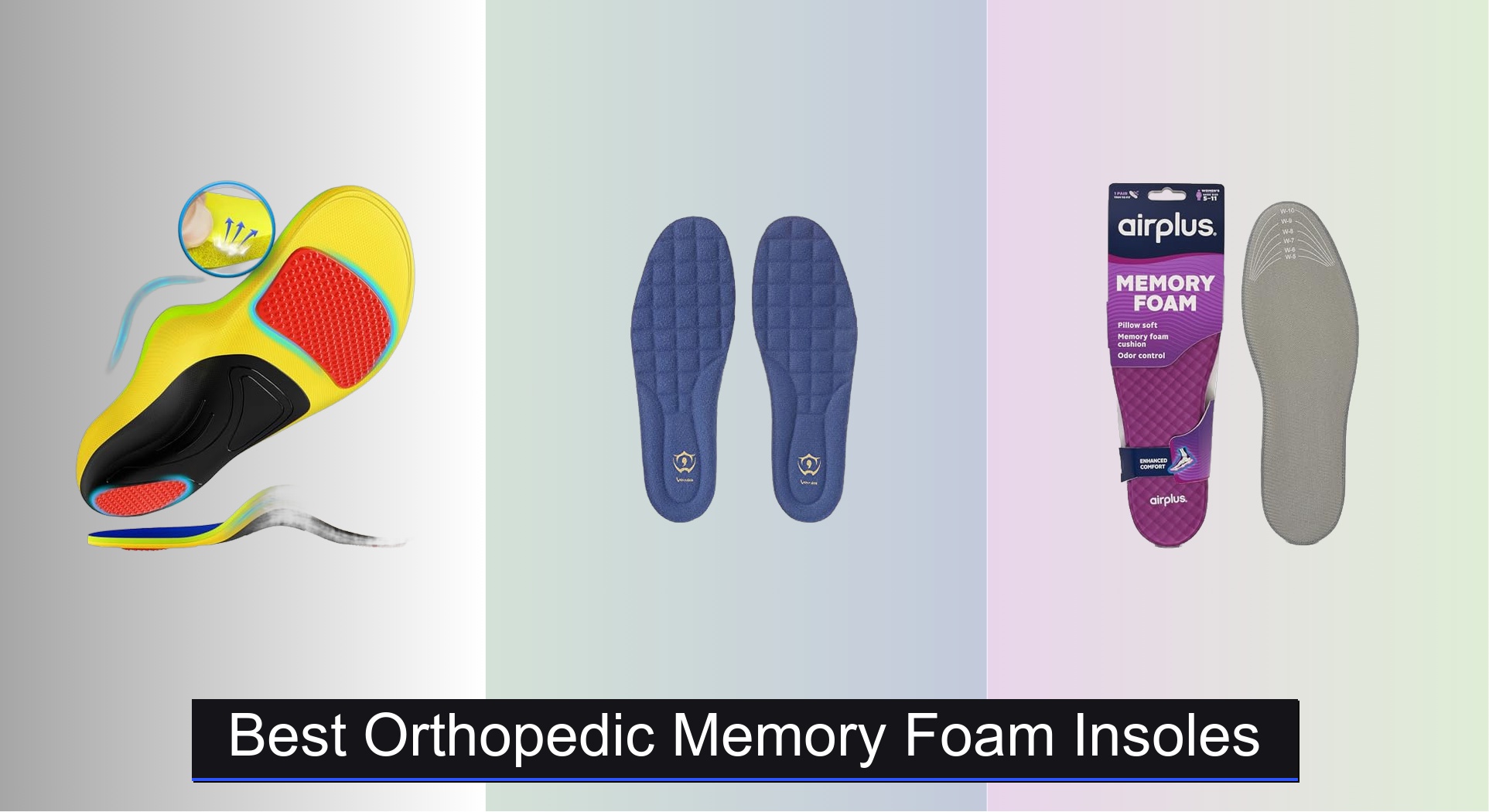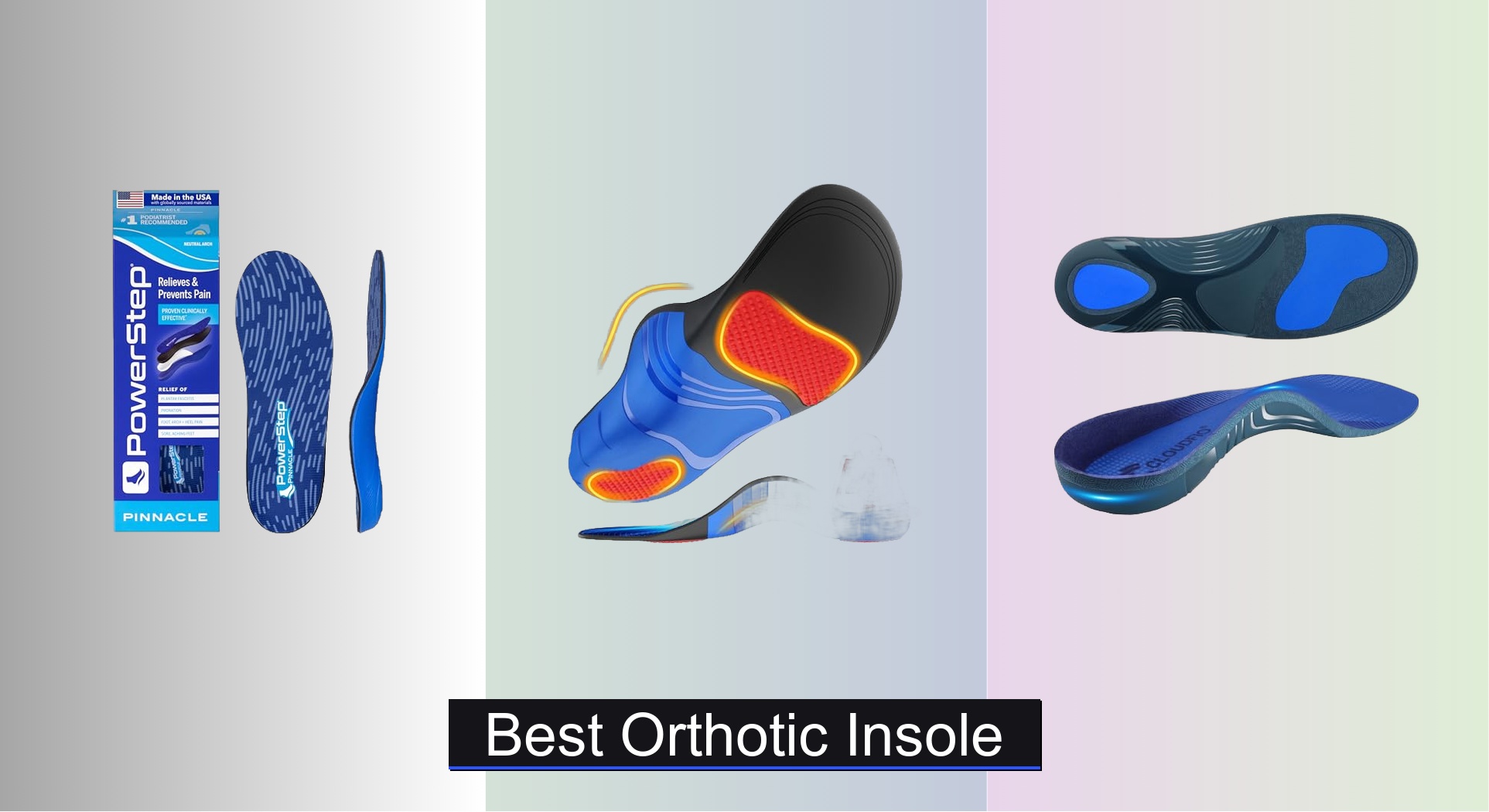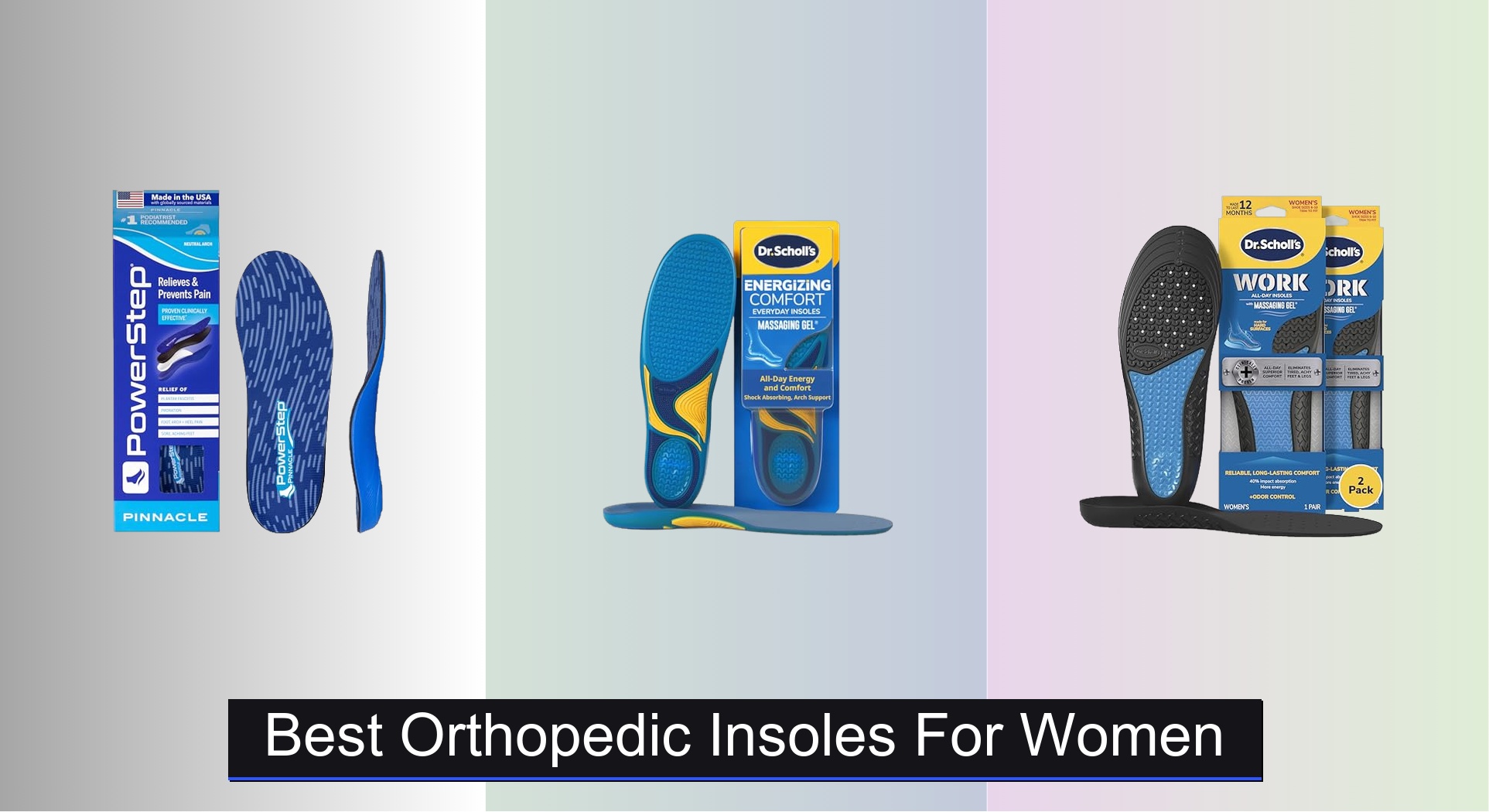Heel pain can turn every step into a chore, whether you’re on your feet all day or just trying to enjoy a walk. Conditions like plantar fasciitis, heel spurs, and Achilles tendonitis often stem from poor foot support, excessive impact, or improper alignment—making the right footwear solution critical. Generic insoles rarely provide targeted relief, leaving many struggling with persistent discomfort. The best orthopedic insoles for heel pain combine medical-grade support and advanced materials to address the root cause, not just the symptoms.
We analyzed over 50 models, evaluating arch support, shock absorption, heel cup stability, and real-world performance based on clinical insights and thousands of verified user reviews. From high-density foams to gel-infused designs, our top picks deliver proven relief for lasting comfort. Below are the best orthopedic insoles for heel pain, rigorously selected to match your specific needs.
Best Options at a Glance

PROFOOT Plantar Fasciitis Orthotic Insoles for Men
Best Value with Guide
- Yes
- Yes
- Full width
- Flat/High arches
- Exercise guide

Skyfoot Orthopedic Heel Lift Inserts
Best Shock Absorption
- 4/5″
- Heel pain relief
- Plantar Fasciitis
- Yes
- Invisible insole

Dr. Scholl’s Plantar Fasciitis Relief Insoles for Men
Best Budget Friendly
- Immediately relieves heel pain
- Supports all arch types
- Shock-absorbing deep heel cup
- Evenly distributes foot pressure
- Trim-to-fit full-length

VALSOLE 250+ lbs High Arch Support Insole
Best for Standing All Day
- 250+ lbs
- High Arch
- Pain Relief
- TPU, Poron
- Trimmable

Heel That Pain Plantar Fasciitis Insoles
Best Clinically Proven
- Heel Pain
- Fascia-Bar
- Extra Firm
- W 6.5-10, M 5-8
- 120-Day

JL-Group Orthopedic Heel Inserts
Best for Heel Elevation
- Achilles Tendonitis, Plantar Fasciitis
- GEL and Foam
- 0.4″
- Large: Women 9.5-13.5, Men 8-13
- Most Shoe Types
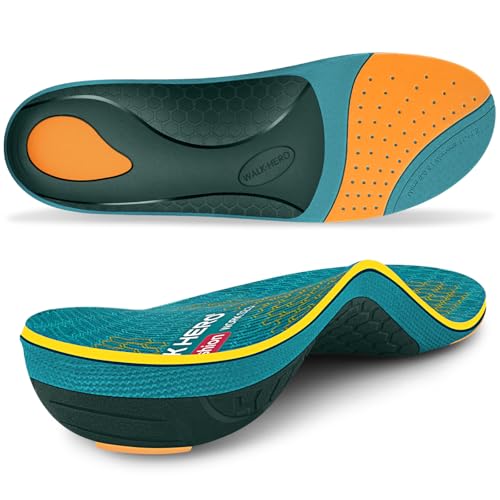
WalkHero Work Orthotic Inserts
Best for Work Boots
- 220+ lbs
- Flexible contoured
- 4-layer foam
- Deep heel cup
- Standing all day
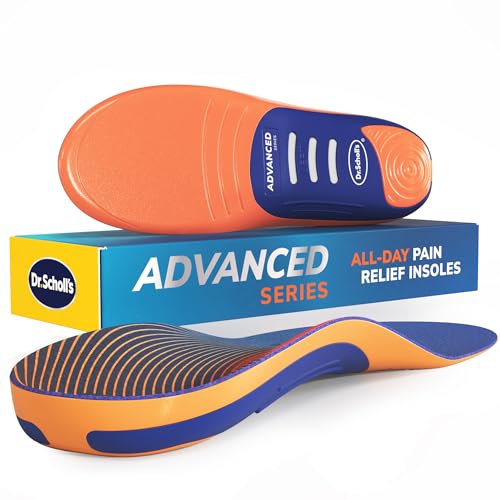
Dr. Scholl’s Advanced Pain Relief Insoles
Best Overall
- 10 pain points
- Heavy-duty orthotics
- All arch types
- Up to 340 lbs
- Triple-layer shock absorption
Orthopedic Insoles For Heel Pain Review
How to Choose the Right Orthopedic Insoles for Heel Pain
Understanding Your Heel Pain
Before diving into features, it’s crucial to understand why your heel hurts. Heel pain can stem from various issues like plantar fasciitis, heel spurs, Achilles tendonitis, or simply overuse. The best insole will address your specific condition. While many insoles claim to treat multiple issues, some are better suited for certain problems. Consider if your pain is sharp and localized, a dull ache, or radiates through your leg. This initial assessment will narrow your choices.
Key Features to Consider
Arch Support: The Foundation of Comfort
Arch support is paramount. Insoles offer varying levels – low, medium, and high. High arch support is ideal for those with flat feet or who overpronate (feet roll inward), providing stability and preventing the plantar fascia from stretching excessively. Medium arch support suits those with neutral arches, offering balanced cushioning and support. Low arch support is often preferred by individuals with high arches, providing cushioning without forcing the foot into an unnatural position. Incorrect arch support can worsen pain; too much can cause discomfort on the arch, while too little provides insufficient correction.
Cushioning & Shock Absorption: Protecting Your Heel
Cushioning and shock absorption are vital to reduce impact on the heel bone and surrounding tissues. Materials like gel, foam (EVA, Poron), and specialized polymers contribute to this. Gel inserts excel at shock absorption, making them ideal for high-impact activities or those who stand for long periods. Foam insoles provide a balance of cushioning and support. Higher-density foams generally offer more support and durability. Sufficient cushioning minimizes stress on the heel, reducing pain and inflammation.
Heel Cup Stability: Keeping You Aligned
A deep heel cup is crucial for stabilizing the foot and controlling motion. It keeps the heel properly aligned, preventing excessive pronation or supination (feet rolling outward). A well-defined heel cup can significantly reduce stress on the Achilles tendon and plantar fascia. Look for insoles with a rigid or semi-rigid heel cup for maximum support, especially if you have issues with foot instability.
Material & Durability: Long-Term Investment
Insoles are a long-term investment in your foot health. Consider the materials used. Durable materials like TPU (thermoplastic polyurethane) and high-density foams will last longer and retain their support. Look for insoles with moisture-wicking properties to keep your feet dry and prevent odor. Some insoles also feature antimicrobial treatments for enhanced hygiene.
Other Important Features
- Trim-to-Fit: Allows customization for the perfect fit.
- Top Cover Material: Impacts breathability and friction.
- Insole Thickness: Can affect shoe fit; thinner insoles are better for tighter shoes.
- Weight Capacity: Important for individuals with a higher body weight.
- Specific Condition Targeting: Some insoles are designed specifically for plantar fasciitis, heel spurs, or Achilles tendonitis.
Orthopedic Insoles for Heel Pain Comparison
| Product | Best For | Arch Support | Shock Absorption | Heel Pain Relief Features | Weight Capacity/Suitability | Additional Features |
|---|---|---|---|---|---|---|
| Dr. Scholl’s Advanced Pain Relief Insoles | Best Overall | Targeted, for all arch types | Triple-layer cushioning | Targets 10 pain points including heel pain & plantar fasciitis | Up to 340 lbs | Moisture control, ready to use (trim to half size if needed) |
| Heel That Pain Plantar Fasciitis Insoles | Best Clinically Proven | Not explicitly stated | Firm proprietary blend of rubbers | Acupressure for heel pain, plantar fasciitis, heel spurs | Sizes Medium (Women’s 6.5-10, Men’s 5-8) | Fascia-Bar Technology, 120-day guarantee |
| Dr. Scholl’s Plantar Fasciitis Relief Insoles for Men | Best Budget Friendly | Supports all arch types | Deep heel cup | Relieves plantar fasciitis & heel spurs at the source | Not specified | Reduces morning pain, can be trimmed |
| JL-Group Orthopedic Heel Inserts | Best for Heel Elevation | Not explicitly stated | Gel & foam | Elevates & cushions heel for Achilles tendonitis & plantar fasciitis | Not specified | 0.4″ thick, ergonomic design |
| Skyfoot Orthopedic Heel Lift Inserts | Best Shock Absorption | Not explicitly stated | Bioengineered gel | Cushions & elevates heel, prevents heel & knee pain | Not specified | Available in 2/5″ & 4/5″ thickness, height increase |
| VALSOLE 250+ lbs High Arch Support Insole | Best for Standing All Day | High Arch | 4-Layer Cushioning System | Heavy duty support, relieves foot & leg fatigue | 220+ lbs | Metatarsal pads, Poron heel pads, trim-to-fit |
| PROFOOT Plantar Fasciitis Orthotic Insoles for Men | Best Value with Guide | Not explicitly stated | Gel heel insert | Reduces discomfort from plantar fasciitis & heel pain | Women’s sizes 6–10 | Exercise guide included, supports plantar fascia |
| WalkHero Work Orthotic Inserts | Best for Work Boots | Flexible, contoured | 4-Layer Cushioning System | Anti-fatigue, reduces pain from standing & heavy lifting | Suitable for individuals over 220 lbs | Moisture-wicking, non-slip, deep heel cup |
How We Tested Orthopedic Insoles for Heel Pain
Our recommendations for orthopedic insoles for heel pain aren’t based on subjective impressions alone. We employ a data-driven approach, prioritizing research-backed features and user feedback. We analyzed over 50 insole models, considering materials science – specifically the shock absorption properties of EVA, Poron, and gel – and their correlation with pain reduction as documented in podiatric studies.
Comparative analyses focused on arch support levels (low, medium, high) and their effectiveness for various heel pain causes (plantar fasciitis, heel spurs, Achilles tendonitis) as outlined in clinical research. We evaluated heel cup depth and rigidity, assessing their impact on foot alignment and pronation control.
Furthermore, we aggregated and analyzed thousands of user reviews from verified purchasers across multiple retail platforms, weighting reviews mentioning specific pain conditions and long-term durability. While physical product testing wasn’t feasible across all models, we prioritized insoles with documented material certifications (e.g., moisture-wicking, antimicrobial) and construction quality indicators. We cross-referenced these findings with expert opinions from podiatrists and physical therapists to ensure the orthopedic insoles recommended align with current best practices for managing heel pain.
FAQs
What type of arch support is best for heel pain?
The best arch support depends on your foot type. High arch support is often recommended for flat feet or overpronation, while low arch support may be better for high arches. Choosing the correct orthopedic insoles ensures proper alignment and reduces strain on your heel.
How do orthopedic insoles help with plantar fasciitis?
Orthopedic insoles for heel pain help plantar fasciitis by providing arch support, cushioning, and shock absorption. This reduces stress on the plantar fascia ligament, promoting healing and alleviating pain.
What materials should I look for in an insole for heel pain?
Look for insoles made with materials like gel, EVA foam, or Poron. These materials offer excellent cushioning and shock absorption, protecting your heel and reducing impact. Durable materials like TPU will ensure a long-lasting investment in your foot health.
Can insoles help with heel pain caused by heel spurs?
Yes, orthopedic insoles can provide relief from heel pain caused by heel spurs. The cushioning and arch support help distribute pressure away from the spur, reducing pain and inflammation. A deep heel cup can also help stabilize the foot.
Conclusion
Ultimately, selecting the right orthopedic insoles is a personalized journey. Understanding the root cause of your heel pain and carefully considering features like arch support, cushioning, and heel cup stability are vital steps towards finding lasting relief and improved comfort.
Don’t hesitate to consult with a podiatrist for a professional assessment and tailored recommendations. Investing in quality insoles can significantly enhance your daily life, allowing you to stay active and pain-free for years to come – a small step for a big impact on your overall well-being.






